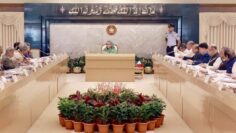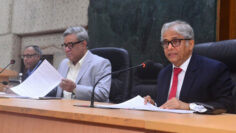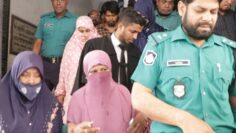WB praises Bangladesh for anti-poverty social schemes
This affirmation of poverty alleviation has come from none other than the world’s top lender, the World Bank, reports UNB.
However, more efforts are required for further reduction of poverty in Bangladesh, according to the World Bank.
Reallocating existing transfers to the poorest in the country can help bring down poverty further — from 36% to 12%, the global lender said in its report unveiled on Thursday.
The report titled ‘Bangladesh Social Protection Public Expenditure Review’ reflects on Bangladesh’s continued investment towards social protection and how it can improve on its existing framework, including planning, designing, programming, and delivery of the various social protection programmes and projects.
The report finds that the social protection programmes are mostly focused in rural areas. But, with almost one in five of the urban population living in poverty, and half of the households at the risk of falling into poverty, there is a need for rebalancing geographic allocations, it suggests.
About 11% of people in urban areas are covered by social protection whereas 19% of the urban population is poor. On the contrary, the coverage in rural areas is higher than the poverty rate, with programmes reaching 36% of people, while 26% live in poverty.
Using a social registry, such as the National Household Database can improve targeting of both programmes and households at a reduced cost.
“Over the last decades, Bangladesh has expanded its coverage of social protection programmes that now reach three in every 10 households in the country,” said World Bank Operations Manager for Bangladesh and Bhutan, Dandan Chen.
“The Covid-19 pandemic has accentuated the need for a more robust, efficient, and adaptive social protection system. Going forward, well-targeted and less fragmented social protection programmes that consider the demographic change, unplanned urbanization, labor market vulnerability, and frequent shocks will help the country continue with its success of poverty reduction.”
In FY 20, Bangladesh spent about 2.6% of GDP in social protection, which is in line with countries with similar income levels. However, some risk groups remain underserved, in particular there are gaps in programing for early years and for the economic inclusion of poor and vulnerable youth and adults.
For example, in every eight poor people, one is a child. Yet, the poor young children receive only 1.6% of social protection expenditures.
Spending will be more effective if the allocations are aligned with the share of the poor in different categories, and with the different functions played by programmes, according to the World Bank.
“Investing in early childhood helps a child grow healthier and be more productive in adult life and thus break the cycle of poverty across generations,” said World Bank Lead Economist and a co-author of the report, Aline Coudouel.
“The country has taken innovative programmes, reflecting the life cycle approach. As patterns of risk change in different phases of life, the life cycle approach needs to encompass support from pregnant mothers to old age, persons with disabilities, as well as from households facing shocks to those in chronic poverty.”
To boost the quality and efficiency of service delivery, the government-to-person (G2P) and mobile financial services should be scaled up, suggests the report.
It takes about two months to transfer the funds from treasury to the beneficiary. The G2P scheme can cut processing time to 10 days.


















